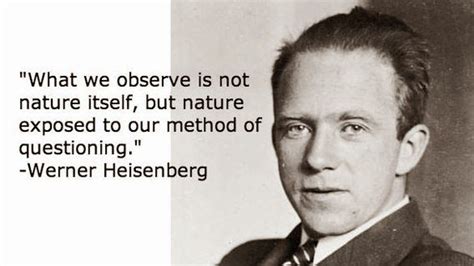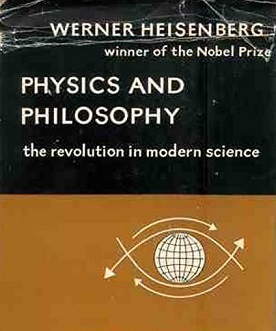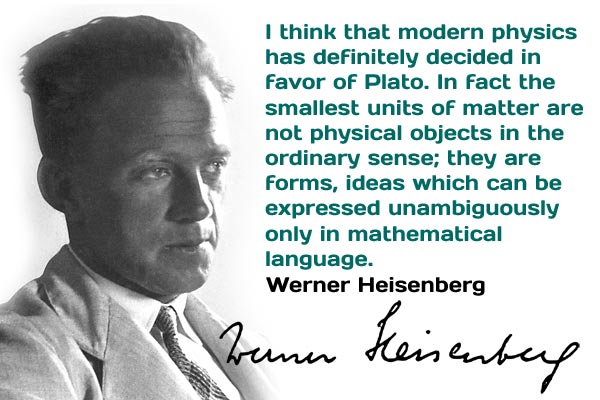|
home | what's new | other sites | contact | about |
|||
|
Word Gems exploring self-realization, sacred personhood, and full humanity
Quantum Mechanics
return to "Quantum Mechanics" main-page
Werner Heisenberg (1901-1976)
From chapter 8 of Dr. Heisenberg's 1958 book, Physics And Philosophy
… Bohm has made a counterproposal to the Copenhagen interpretation, which has recently been taken up to some extent also by de Broglie. Bohm's interpretation has been worked out in detail. It may therefore serve here as a basis for the discussions. Bohm considers the particles as 'objectively real' structures, like the point masses in Newtonian mechanics. The waves in configuration space are in his interpretation 'objectively real' too, like electric fields. Configuration space is a space of many dimensions referring to the different co-ordinates of all the particles belonging to the system. Here we meet a first difficulty: what does it mean to call waves in configuration space 'real'? This space is a very abstract space. The word 'real' goes back to the Latin word, 'res', which means 'thing'; but things are in the ordinary three-dimensional space, not in an abstract configuration space. One may call the waves in configuration space 'objective' when one wants to say that these waves do not depend on any observer;; but one can scarcely call them 'real' unless one is willing to change the meaning of the word. Bohm goes on defining the lines perpendicular to the surfaces of constant wave-phase as the possible orbits of the particles. Which of these lines is the 'rear orbit depends, according to him, on the history of the system and the measuring apparatus and cannot be decided without knowing more about the system and the measuring equipment than actually can be known. This history contains in fact the hidden parameters, the 'actual orbit' before the experiment, started. One consequence of this interpretation is, as Pauli has emphasized, that the electrons in the ground states of many atoms should be at rest, not performing any orbital motion around the atomic nucleus. This looks like a contradiction of the experiments, since measurements of the velocity of the electrons in the! ground state (for instance, by means of the Compton effect) reveal always a velocity distribution in the ground state, which is—in conformity with the rules of quantum mechanics—given by the square of the wave function in momentum or velocity space. But here Bohm can argue that the measurement can no longer be evaluated by the ordinary laws. He agrees that the normal evaluation of the measurement would indeed lead to a velocity distribution; but when the quantum theory for the measuring equipment is taken into account — especially some strange quantum potentials introduced ad hoc by Bohm—then the statement is admissible that the electrons 'really' always are at rest. In measurements of the position of the particle, Bohm takes the ordinary interpretation of the experiments as correct; in measurements of the velocity he rejects it. At this price Bohm considers himself able to assert: 'We do not need to abandon the precise, rational and objective description of individual systems in the realm of quantum theory.' This objective description, however, reveals itself as a kind of 'idealogical super structure', which has little to do with immediate physical reality; for the hidden parameters of Bohm's interpretation are of such a kind that they can never occur in the description of real processes, if quantum theory remains unchanged. In order to escape this difficulty, Bohm does in fact express the hope that in future experiments in the range of the elementary particles the hidden parameters may yet play a physical part, and that quantum theory may thus be proved false. When such strange hopes were expressed, Bohr used to say that they were similar in structure to the sentence: 'We may hope that it will later turn out that sometimes 2 x 2 = 5, for this would be of great advantages for our finances’… If we disregard this possible alteration of quantum theory, then Bohm's language, as we have already pointed out, says nothing about physics that is different from what the Copenhagen interpretation says. There then remains only the question of the suitability of this language. Besides the objection already made that in speaking of particle orbits we are concerned with a superfluous 'ideological superstructure', it must be particularly mentioned here that Bohm's language destroys the symmetry between position and velocity which is implicit in quantum theory; for the measurements of position Bohm accepts the usual interpretation, for the measurements of velocity or momentum he rejects it. Since the symmetry properties always constitute the most essential features of a theory, it is difficult to see what would be gained by omitting them in the corresponding language. Therefore, one cannot consider Bohm's counterproposal to the Copenhagen interpretation as an improvement.
|
|||
|
|


